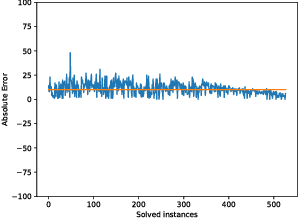Nikolaj Bjorner
LLM-Based Config Synthesis requires Disambiguation
Jul 16, 2025Abstract:Beyond hallucinations, another problem in program synthesis using LLMs is ambiguity in user intent. We illustrate the ambiguity problem in a networking context for LLM-based incremental configuration synthesis of route-maps and ACLs. These structures frequently overlap in header space, making the relative priority of actions impossible for the LLM to infer without user interaction. Measurements in a large cloud identify complex ACLs with 100's of overlaps, showing ambiguity is a real problem. We propose a prototype system, Clarify, which uses an LLM augmented with a new module called a Disambiguator that helps elicit user intent. On a small synthetic workload, Clarify incrementally synthesizes routing policies after disambiguation and then verifies them. Our treatment of ambiguities is useful more generally when the intent of updates can be correctly synthesized by LLMs, but their integration is ambiguous and can lead to different global behaviors.
Constrained Image Generation Using Binarized Neural Networks with Decision Procedures
Feb 24, 2018



Abstract:We consider the problem of binary image generation with given properties. This problem arises in a number of practical applications, including generation of artificial porous medium for an electrode of lithium-ion batteries, for composed materials, etc. A generated image represents a porous medium and, as such, it is subject to two sets of constraints: topological constraints on the structure and process constraints on the physical process over this structure. To perform image generation we need to define a mapping from a porous medium to its physical process parameters. For a given geometry of a porous medium, this mapping can be done by solving a partial differential equation (PDE). However, embedding a PDE solver into the search procedure is computationally expensive. We use a binarized neural network to approximate a PDE solver. This allows us to encode the entire problem as a logical formula. Our main contribution is that, for the first time, we show that this problem can be tackled using decision procedures. Our experiments show that our model is able to produce random constrained images that satisfy both topological and process constraints.
 Add to Chrome
Add to Chrome Add to Firefox
Add to Firefox Add to Edge
Add to Edge